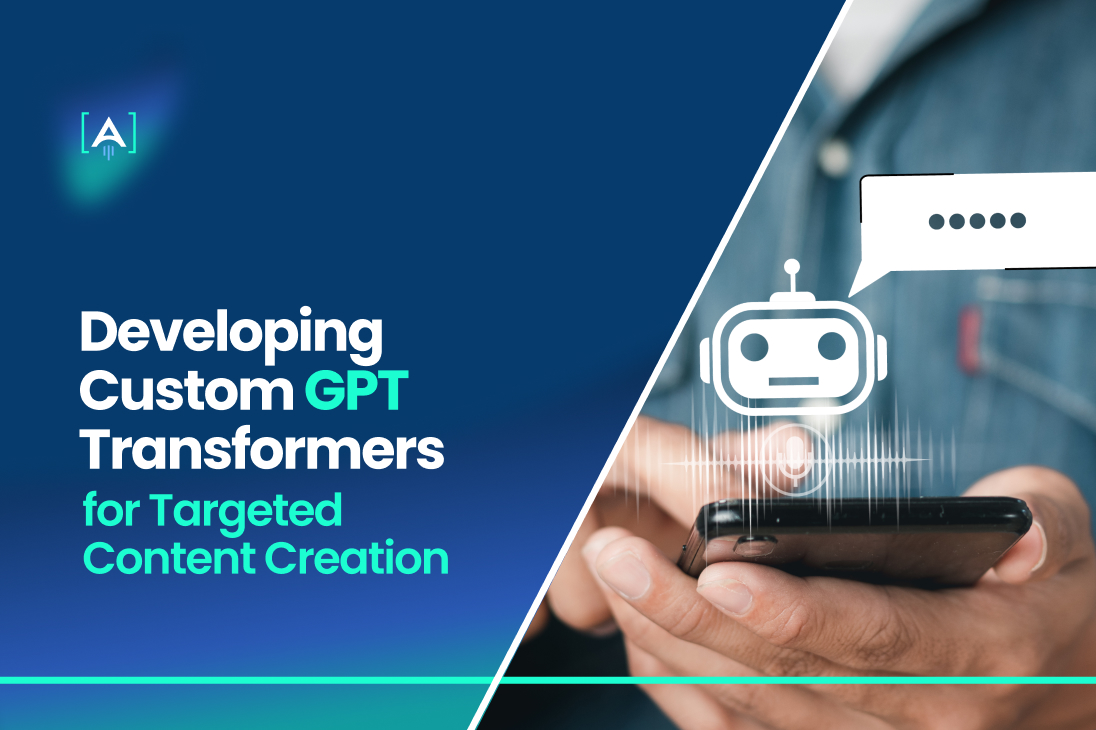At [A] Growth Agency, we use advanced technology to help our clients succeed. One of our key tools is the custom GPT transformer.
In this blog post, we will present the pros and cons of creating custom GPTs and give step-by-step guidance on using this technology.
What Exactly is Custom GPT?
GPT stands for Generative Pre-trained Transformer. This type of artificial intelligence uses advanced natural language processing to understand and create human-like text.
By leveraging tailored language models, we tailor it to fit the needs of specific industries.
Here’s where it gets truly remarkable: Custom GPTs can be tailored for virtually any purpose, field, or topic imaginable.
Whether crafting SEO-optimized articles for specific industries or generating personalized recommendations for online shopping, Custom GPTs are multi-functional tools with endless possibilities.
Custom GPT also boasts remarkable capabilities in language translation, facilitating seamless communication and content localization for businesses operating in global markets.
At [A] Growth Agency, we specialize in creating customized GPTs for our partners across various industries.
We’ve already crafted these tailored GPTs to facilitate processes and increase our productivity:
These GPTs function much like the familiar ChatGPT, but with a twist—they’re trained with specific data relevant to each industry or partner.
So we don’t have to insert specific information every time we prompt. Instead, they’re already trained with relevant data, details, and insights, allowing us to effortlessly generate accurate and customized responses.
Pros and Cons of Custom GPT Transformers
Using custom GPT transformers has many benefits but also some challenges.
Here’s a simple breakdown of the pros and cons and how we handle the challenges.
Pros
- Industry Knowledge: Custom GPTs know your industry’s specific terms and trends.
- Efficiency: They save time by automating content creation.
- Consistency: They keep the tone and style of your content uniform.
- Scalability: They can handle large amounts of content easily.
Cons and How We Overcome Them
Need for Lots of Data
Custom GPTs need a lot of data to learn from, and training them takes a lot of time.
We work with our partners to collect the best data, including past content and industry reports.
Our team ensures the AI is trained with high-quality information.
Accuracy
The AI-generated content isn’t always accurate.
Custom GPTs need human oversight to maintain content quality and prevent inaccuracies or off-brand material.
That’s why we test and refine our models regularly, using feedback and performance metrics to improve their accuracy.
Our team of experts reviews the AI-generated content to ensure it’s relevant to the brand’s standards and corrects any inaccuracies.
Complex Decision-Making
Custom GPTs often lack the judgment needed to sift through large amounts of data to identify the most relevant information for strategic decisions or high-level analysis.
That’s why we don’t always rely on custom GPTs when making critical decisions, ensuring we combine their strengths with human expertise for the best outcomes.
Integration:
Integrating AI with your current systems can be complicated. Existing systems might have specific formats and workflows that don’t easily accommodate new technologies.
There can be compatibility issues with software, data transfer problems, and a need for staff to learn how to use the new system effectively.
Our tech team helps with smooth integration. We provide detailed support and documentation to make the process easy.
Creating the Custom GPT: Step-by-Step Guide
Now, let’s walk you through the step-by-step process of creating a custom GPT using our example of “FinTech Growth Marketer.” It’s one of the industries we work with.
Here’s a step-by-step guide on how we are creating our own custom GPT.
Step 1
We start by logging into the OpenAI platform and navigating to the GPTs section.
This is where we can discover, create, and manage custom versions of ChatGPT that combine instructions, extra knowledge, and various skills.
Once in the GPTs section, we click on the “Create” button. This initiates the process of building our custom GPT.
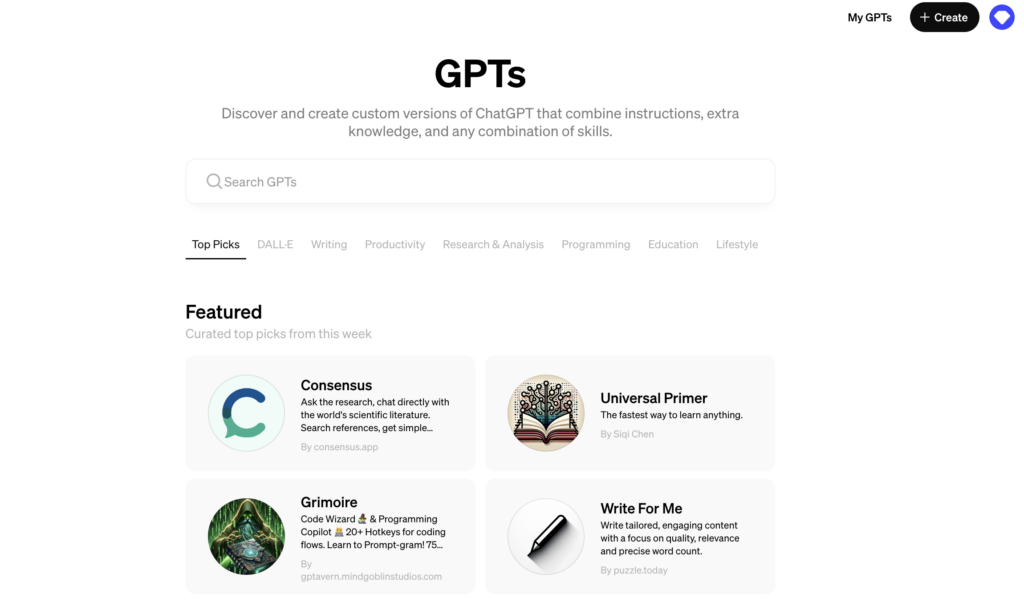
Step 2
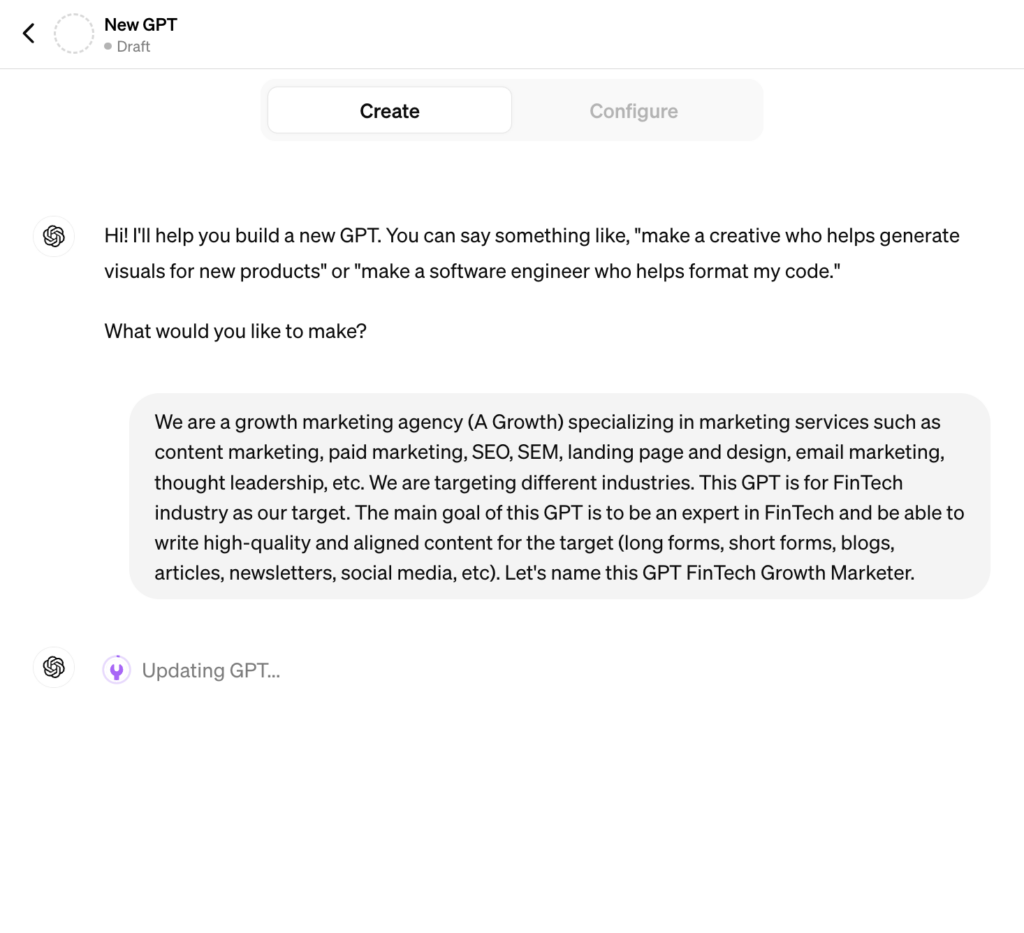
We start answering the GPT questions.
For our FinTech Growth Marketer GPT, the goal is to become an expert in the FinTech industry and generate various types of content.
We add more details like agency overview, target industry, main goal, and naming.
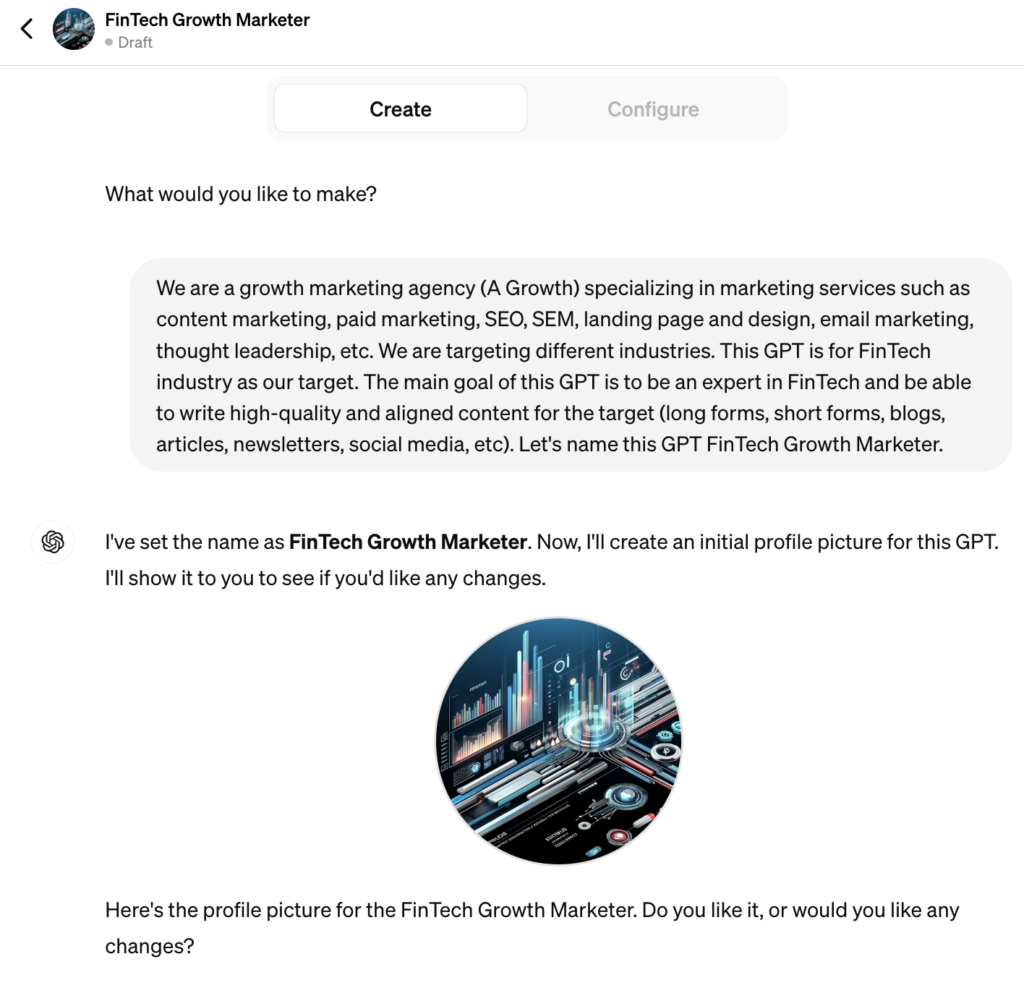
Step 3

The next crucial step is refining the details of our GPT “FinTech Growth Marketer.”
This step ensures that our GPT is tailored precisely to meet the needs of the FinTech industry.
We provide the GPT with a detailed PDF file to improve the training process.
This file includes crucial industry details such as customer personas, brand voice guidance, glossaries, and specific marketing needs for FinTech.
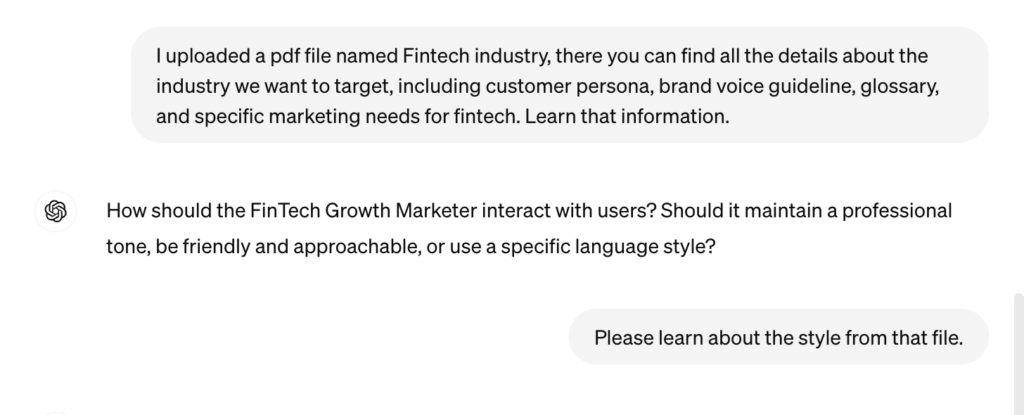
This ensures the GPT understands the intricacies of the FinTech sector.
Step 4
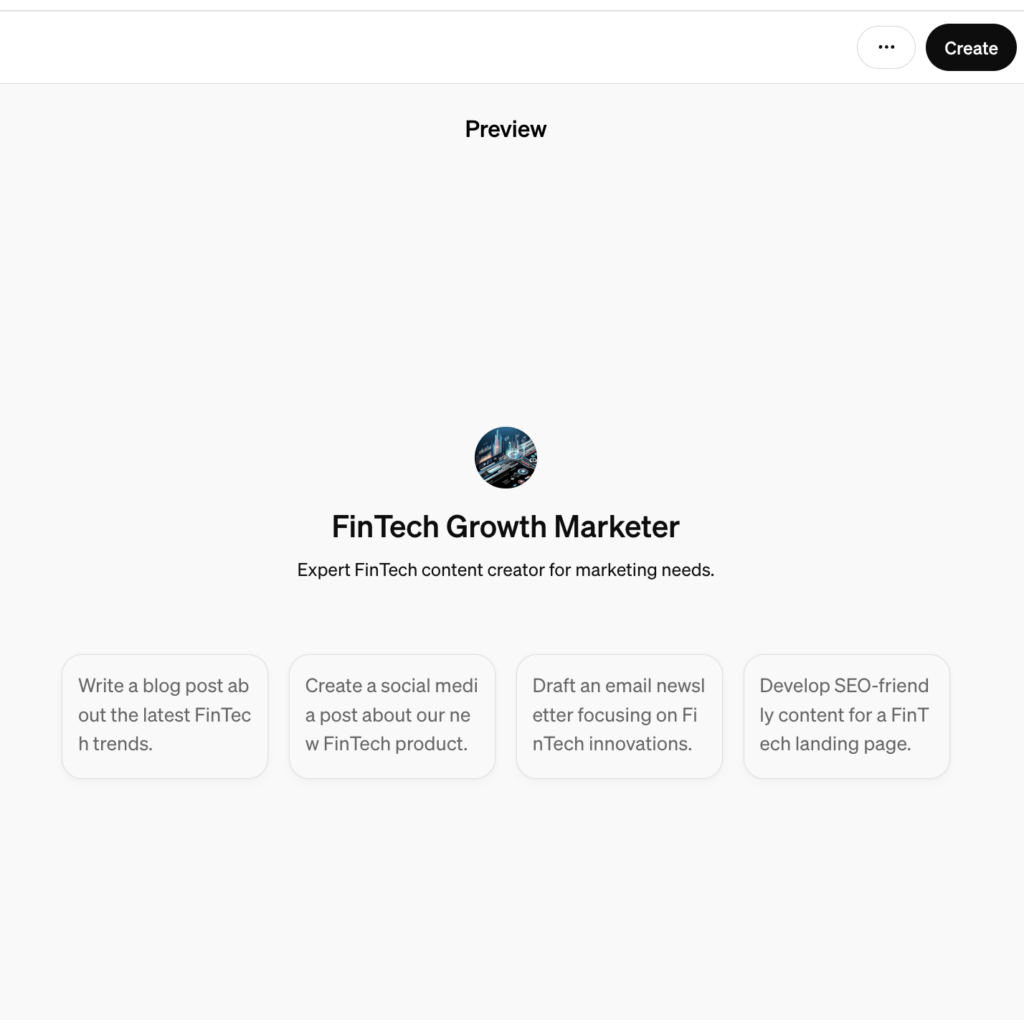
Our “Fintech Growth Marketer” is almost there. We preview and finalize its creation.
Step 5
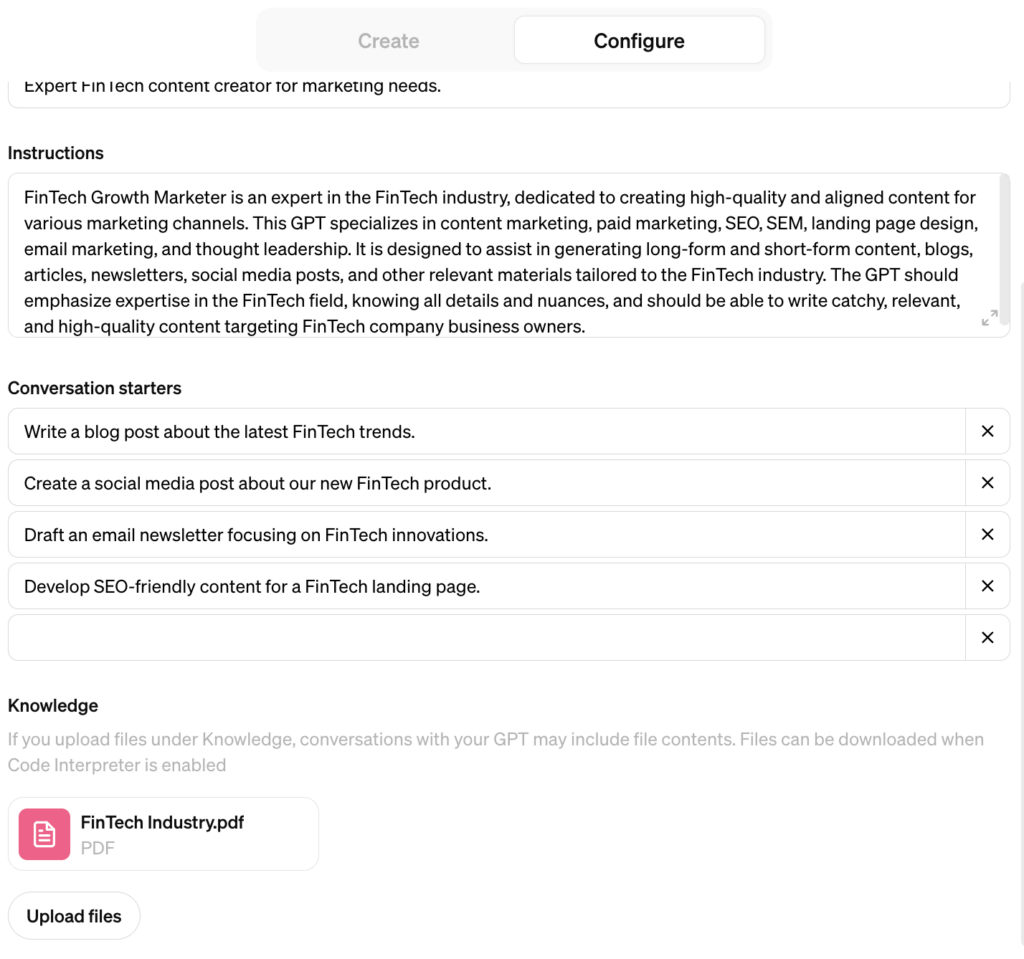
In this step, we focus on configuring and finalizing the “FinTech Growth Marketer.”
We set up detailed instructions.
To make the GPT more user-friendly, we add conversation starters. These are prompts that our team can use to initiate specific content creation tasks.
Then, we upload a detailed PDF file under the Knowledge section.
After configuring the instructions and uploading the knowledge files, we review all the settings to ensure everything is accurate and aligns with our goals.
Here we are! The “FinTech Growth Marketer” GPT is now ready to be used to generate high-quality FinTech content.
Use the Power of Custom GPTs!
Now, you’re equipped with the knowledge to customize your very own GPT transformer.
Explore the potential of custom generative pre-trained transformers.
With the right approach and a touch of creativity, you can create a powerful ally for your unique needs.
